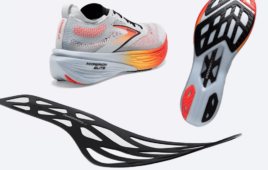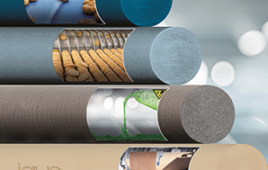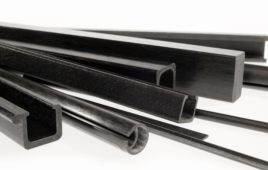KANSAS CITY, MO — GE Energy Services’ Filtration Technologies Team highlighted several new technologies at MD&M West for medical and life science companies needing enhanced filtration and separation for various applications.
The technologies optimize flow and retention characteristics by relying on expanded polyterafluoroethylene (ePTFE) membranes. Compared to other porous materials, ePTFE membranes show superior performance as a barrier to liquids, particles and aerosols that may contain viable bacteria and viruses. GE’s Aspire™ microfiltration and venting membranes are easily integrated into a wide range of product designs and filter housings, offering different economic or environmental benefits.
“In the microfiltration industry, requirements for particulate retention and airflow are always increasing, and the Aspire product line is designed, developed and manufactured with that in mind,” says Chris Keller, product manager—Filtration Technologies Team for GE Energy Services. “We are committed to working with you to make your products better.”
Here’s a closer look at the GE technologies:
Edge lamination—GE is the only company with patented media that has lamination just on the edges of the ePTFE film. Manufacturers who want to update their pleating technology can now place this in the middle of their equipment and maintain air permeability without needing an expensive equipment upgrade. The patented media was developed through a partnership with GE Power & Water for a new line of pleated cartridge filters.
“Edge lamination has been a major benefit to GE Power & Water in several respects,” says William Laidlaw, global product manager—filtration for GE Power & Water. “Our manufacturing process has been simplified with the use of this technology and production rates have increased significantly. In terms of product performance, our new products utilizing the edge laminates show performance advantages over the previous laminated versions in terms of flow. Our customers have confirmed this improved performance in applications in water, chemical process and medical device manufacturing.”
Green chemistry technique for oleo-phobic technology—This new treatment process modifies how the oleo-phobic treatment is applied to its ePTFE film, reducing VOC air emissions and using supercritical carbon dioxide (CO2) as a vehicle for applying GE’s proprietary oleo-phobic treatment to the ePTFE nodes and fibrals. The inherent open pore structure of the ePTFE film is maintained, allowing equivalent or higher air permeability, while meeting grade resistant specifications to guard against oil contamination.
“This technology from GE has helped provide up to a 50 percent savings for our customers requiring venting solutions,” says Brian Tapp, president of LTI Atlanta. “We now ship over 1 million vents per month, and we’re thankful for the unique partnership we’ve forged with GE and for their help making LTI a leader in venting solutions.”
Steam sterilization—These membranes maintain stable performance even after 200 steam sterilization cycles. As a result, customers can use the cartridge to provide a barrier to airborne and liquid contaminates.
GE engineers studied the challenge presented by these severe environments and designed, developed and commercialized an advanced ePTFE membrane technology to help GE customers meet their customers’ requirements. The result: a membrane that performs the first time, every time.
::Design World::
Filed Under: Green engineering • renewable energy • sustainability, Medical-device manufacture, Materials • advanced, Energy management + harvesting





Tell Us What You Think!